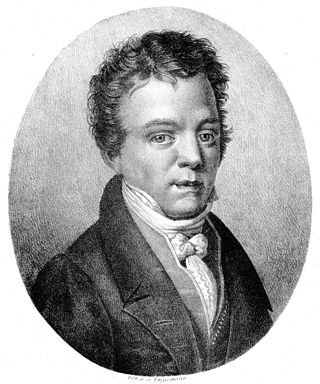Related Research Articles

Chamber music is a form of classical music that is composed for a small group of instruments—traditionally a group that could fit in a palace chamber or a large room. Most broadly, it includes any art music that is performed by a small number of performers, with one performer to a part. However, by convention, it usually does not include solo instrument performances.

A violin concerto is a concerto for solo violin and instrumental ensemble. Such works have been written since the Baroque period, when the solo concerto form was first developed, up through the present day. Many major composers have contributed to the violin concerto repertoire, with the best known works including those by Bach, Bartók, Beethoven, Brahms, Bruch, Dvořák, Khachaturian, Mendelssohn, Mozart, Paganini, Prokofiev, Sarasate, Shostakovich, Sibelius, Tchaikovsky, and Vivaldi.
James Ehnes, is a Canadian concert violinist and violist.
F major is a major scale based on F, with the pitches F, G, A, B♭, C, D, and E. Its key signature has one flat. Its relative minor is D minor and its parallel minor is F minor.

Franz Schubert's final chamber work, the String Quintet in C major is sometimes called the "Cello Quintet" because it is scored for a standard string quartet plus an extra cello instead of the extra viola which is more usual in conventional string quintets. It was composed in 1828 and completed just two months before the composer's death. The first public performance of the piece did not occur until 1850, and publication occurred three years later in 1853. Schubert's only full-fledged string quintet, it has been praised as "sublime" or "extraordinary" and as possessing "bottomless pathos," and is generally regarded as Schubert's finest chamber work as well as one of the greatest compositions in all chamber music.

Jan Václav Hugo Voříšek was a Czech composer, pianist, and organist.

Bernhard Heinrich Romberg was a German cellist and composer.
Hyacinthe Jadin was a French composer who came from a musical family. His uncle Georges Jadin was a composer in Versailles and Paris, along with his father Jean Jadin, who had played bassoon for the French Royal Orchestra. He was one of five musical brothers, the best known of whom was Louis-Emmanuel Jadin.
Laszlo Varga was a Hungarian-born American cellist who had a worldwide status as a soloist, recording artist, and authoritative cello teacher.
Felix Mendelssohn's Sextet in D major, Op. 110, MWV Q 16, for piano, violin, two violas, cello, and double bass was composed in April–May 1824, when Mendelssohn was only 15, the same time he was working on a comic opera Die Hochzeit des Camacho. Its composition took place between the Viola Sonata and the Piano Quartet No. 3. It also preceded the famous Octet, Op. 20 by about a year. 1824 is also the probable year of the composition of the Clarinet Sonata. Like the latter, the Sextet was not published during the composer's lifetime. Its first edition was issued in 1868 as a part of a complete collection of Mendelssohn's works. Hence the misleading high opus number.
Nigel Clarke is a British composer and musician. He is a former head of composition and contemporary music at the London College of Music and Media.
Jean François Toussaint Rogister was a Belgian virtuoso violist, teacher and composer.

Joseph Mayseder was an Austrian violin virtuoso and composer.
The Adagio and Rondo Concertante in F major for piano quartet, D 487, was composed by Franz Schubert in 1816. A "brilliant" work designed as a display piece for the piano soloist, it is not only one of the few works the composer wrote in this style, but it is his first complete composition for piano and string ensemble, preceding the "Trout" Quintet" by three years.
The Sextet for Horns and String Quartet, Op. 81b, was written by composer Ludwig van Beethoven, probably around 1795, and published by Simrock Verlag in 1810. It is in the key of E♭ major and is scored for two horns and a string quartet. It was probably modelled on the Horn Quintet in the same key by Mozart and like the earlier work it is written in a concertante style, with virtuosic writing for the two horns.
In 1816, Franz Schubert composed his first three violin sonatas, D 384, 385 and 408. They were published after the composer's death as Sonatinas in 1836. These sonatas breathe an intimate atmosphere, requiring relatively little virtuoso bravura from their performers.
References
- Notes
- ↑ This accompanying group can be as small as a standard string quartet.
- 1 2 ( Dearling 1996 , p. 3)
- ↑ ( Markow 2007 )
- ↑ ( Simon 2008 )[ dead link ]
- Sources
- Castillo, Patrick (2013). "Concert Program VIII: The Solo Voice" (PDF). Menlo School . Retrieved 20 November 2016.
- Dearling, Robert (1996). Mysliveček, Viotti & Spohr: Violin Concertos (PDF) (CD). Hyperion Records. CDA66840.
- Markow, Robert (2007). "Concert Program Notes - Rondo in A major for Violin and Strings, D. 438 (1816)". National Arts Centre of Canada. Retrieved 17 September 2016.
- Sheppard Skærved, Peter (23 November 2013). "Franz Schubert –A Major Rondo for Violin & Strings D438-Some Unmusical Considerations". Peter-Sheppard-Skaerved.com. Retrieved 17 September 2016.
- Simon, Benjamin (2008). "Program Notes - Virtuosi, January 2008". San Francisco Chamber Orchestra. Archived from the original on September 29, 2014. Retrieved 17 September 2016.